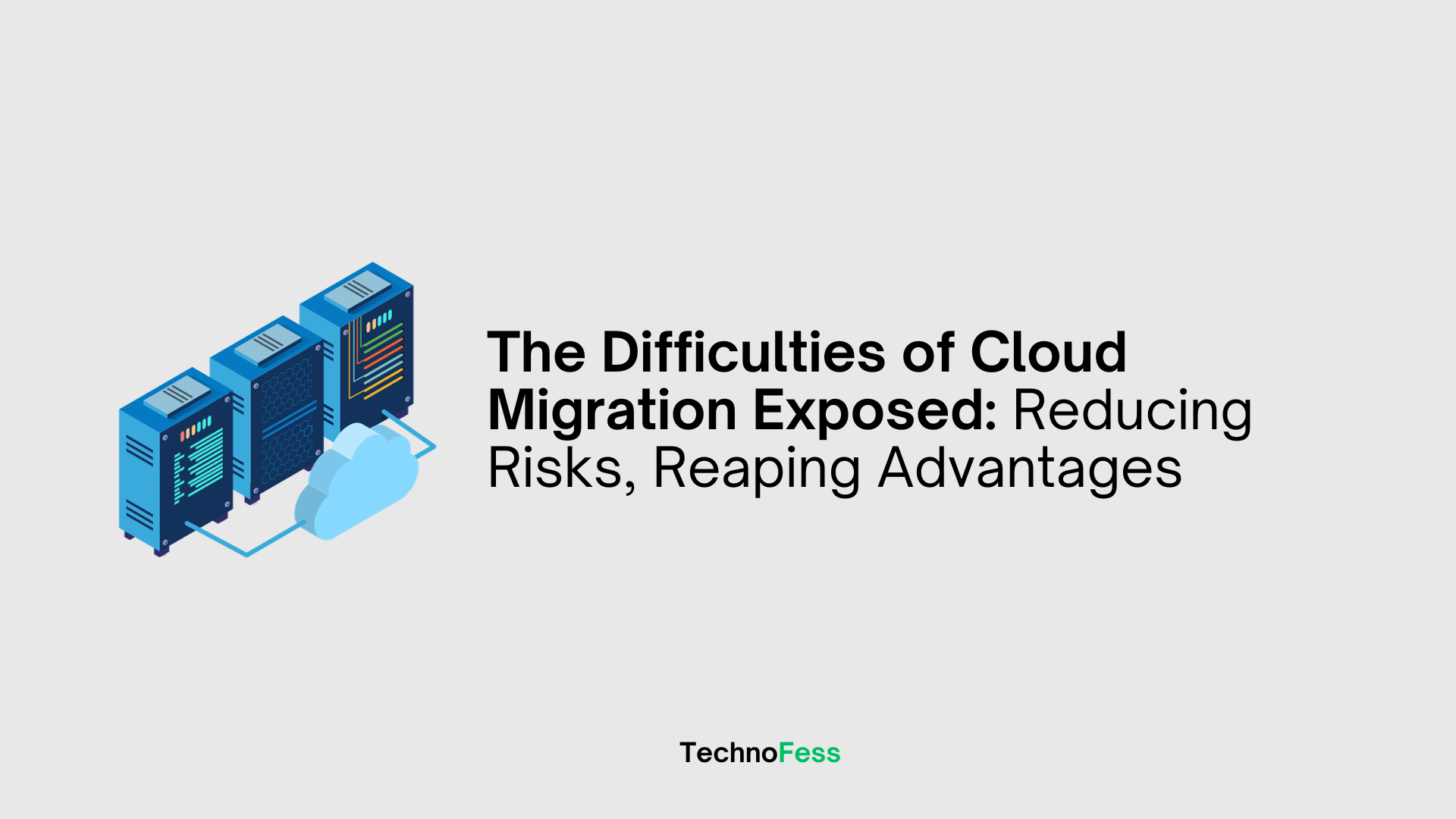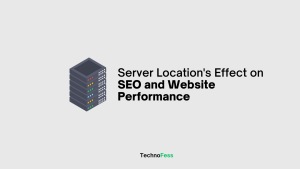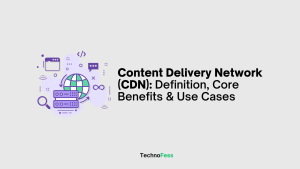Are you preparing to move to the cloud? This choice may open up new avenues for you and increase productivity. But moving to the cloud is a big transition that has many difficulties, like figuring out intricate security procedures and making sure data transfers smoothly. These difficulties might be intimidating, particularly if your team is only getting established in the cloud. But there can be terrible repercussions if you don’t get to know them and get ready for the move. We’ll walk you through cloud migration obstacles in this article so you can prepare for and effectively handle them when making the switch to the cloud.
Comprehending Cloud Migration
Starting a cloud migration process is like embarking on an exciting journey. The only distinction is that you’re traveling into the digital world while migrating to the cloud. It demands knowledge, bravery, willingness to take risks, and problem-solving abilities, just like a true adventure. A move from traditional, frequently rigid infrastructure to a more dynamic, scalable environment is indicated by cloud migration. However, what precisely does this involve?
Read also The Best Justifications for Using VPS in Cryptocurrency Trading
Moving data, apps, and other business components from on-premises servers to a cloud-based architecture is the fundamental task of cloud migration difficulties. This change is a strategic as well as a technological one that has the potential to completely transform how your company competes and runs in the digital era. We will exclusively address the difficulties associated with cloud migration in this blog. But we have a whole article on the same subject that you should read here if you want to completely comprehend all the crucial elements of moving from on-premises to the cloud.
Prior to Migration Obstacles
If one moves on with cloud migration without anticipating certain obstacles, things may get choppy. A seamless shift depends on tackling these cloud migration issues head-on during the pre-migration stage.
Problems with Integration and Compatibility
Ensuring that your present systems and apps can interact with the new environment without any problems is one of the first hurdles of cloud migration. Because compatibility problems can cause major interruptions, it’s critical to assess and update your current infrastructure.
Recognizing the Extent and Size
Organizations frequently need to pay more attention to how difficult it is to migrate to the cloud. This goes beyond simply transferring data; it also involves reorganizing systems and procedures. Determining the extent and magnitude of your transfer in advance helps lessen the difficulties associated with cloud migration and assists in avoiding resource and time overruns.
Risks to Security and Compliance
There are security issues when moving to the cloud because it implies entrusting a third party with your data. It is crucial to make sure that industry rules and data protection legislation are followed. Selecting a vendor who satisfies strict security standards and doing a thorough risk assessment are necessary to meet this problem.
Needs for Training and Skill Gaps
Cloud migration requires specialized knowledge and abilities. It’s critical to recognize skill gaps in your workforce and fill them by employing new employees or providing training. Underestimating this factor may result in improper cloud resource management and use.
Read also: Server Location’s Effect on SEO and Website Performance
Spending Plans and Overspending
Although moving to the cloud can save money over time, there may be upfront expenses that are greater than anticipated. Unexpected costs associated with data transfer, training, and possible downtime are typical difficulties. To prevent financial burdens, accurate budgeting and emergency preparation are essential.
Through proactive resolution of these pre-migration issues, you may create the conditions necessary for a smooth cloud transfer. All of the cloud migration issues may be avoided with enough planning, knowledge of the intricacies, and intelligent risk mitigation measures.
Technical Difficulties in Cloud Migration
You’ll soon run into a variety of technological difficulties when you begin the cloud migration process, which calls for careful consideration and specialized knowledge. Here is a quick rundown of the most important technical issues with cloud migration that you may encounter.
Privacy and Data Security Issues
Considerable security issues are raised when sensitive data is moved to the cloud. When data is in transit or kept in a cloud environment, there is an increased risk of data breaches. Important steps to protect your data include putting strong encryption techniques into place and confirming that the cloud service provider abides by stringent security guidelines.
Risks of Service Disruption and Downtime
Moving important apps and data is a common part of cloud migration, which may cause outages. Making minimal disturbance plans is essential. These hazards can be reduced by employing techniques like making sure there is redundancy and moving during off-peak hours.
Data Transfer Complexity
Not only can moving massive amounts of data to the cloud take time, but it can also take time. Careful planning and execution are required for factors including network bandwidth, data format conversions, and guaranteeing data integrity during the transfer.
Combining with Current Systems
One of the biggest challenges is ensuring that your current on-premises systems connect with cloud services seamlessly. This could necessitate implementing new cloud-compatible solutions or rearranging current ones.
A comprehensive comprehension and a systematic approach are necessary for each of these technological obstacles. You must think about and learn how to apply the best cloud migration tactics if you want to overcome these technical obstacles.
Strategic and Operational Difficulties
Organizations must overcome a number of operational and strategic obstacles in addition to the technological ones associated with cloud migration.
Management of Change
Managing change inside an organization is one of the biggest problems. Making the move to the cloud necessitates changing procedures and mentalities. This entails providing your staff with the necessary training, support, and communication to get them ready for new procedures and technology. The degree to which your team adjusts to these changes will determine how successful the cloud migration is.
Legal Concerns and Compliance
Another crucial element is adhering to legal requirements and industry-specific laws. Various data protection laws, including GDPR and HIPAA, must be followed by cloud environments based on the type of organization and where the data is located. Gaining a comprehensive understanding of these laws and regulations is necessary to ensure compliance in a cloud environment.
Risks of Vendor Lock-In
Selecting a cloud provider may result in vendor lock-in when you become too reliant on the products and services of one source. This may reduce your ability to modify and manage your cloud infrastructure. It’s critical to take portability into account when choosing cloud services in order to reduce this risk.
Concerns about Scalability and Flexibility
Despite the inherent scalability of cloud settings, future growth and scalability planning is essential. This entails comprehending your long-term business goals and making sure that your cloud infrastructure can grow with your needs without incurring extra expenses or complications.
Careful thought and preparation are needed to meet these operational and strategic issues. You can ensure that your cloud migration is in line with your larger business goals and positions you for long-term success by taking proactive measures to solve them.
Crucial Actions for Moving to the Cloud
The complexity of your company greatly affects cloud migration. A basic, systematic approach consists of:
Getting Ready for a Cloud Migration
To guarantee a successful cloud migration, businesses should carefully consider the following factors during the planning stage of the move:
Examining the current environment: By evaluating the data, applications, and IT infrastructure that are currently in existence, ascertain which elements should be moved and which can be retired or consolidated. Prioritizing resources and identifying potential issues like dependencies or compatibility issues are made easier with the help of this process.
How to choose a reliable cloud service company (CSP): Choose a CSP that offers the services and capabilities needed to meet the goals of the business, keeping in mind performance, dependability, security, and compliance. By evaluating different suppliers and their offerings, enterprises may make an informed decision.
Selecting the best migration strategy: Take into account the organization’s objectives, constraints, and evaluation when selecting the migration strategy (such as rehosting, re-platforming, refactoring, etc.).
Safety and adherence: Verify that the migration strategy and the chosen CSP meet the required security and compliance requirements. This could mean implementing additional security measures or selecting a CSP with specific qualifications.
Timetable and project materials: Make a realistic migration timetable that accounts for resource availability, migration complexity, and potential downtime. Assign tasks and resources to team members to facilitate efficient execution.
Rationale for Migration in Business
When constructing a migration business case, it is imperative to examine the operational, financial, and strategic benefits of cloud migration in addition to any potential risks.
Cost-benefit analysis: Determine the expected migration costs, accounting for one-time costs, ongoing operating expenses, and potential savings from cloud adoption. This analysis should also consider the payback duration and ROI for the move.
Operational benefits: Evaluate the impact of the change on resource utilization, performance, scalability, and agility, among other operational efficiency factors.
Revenue growth and innovation: Consider the potential benefits to businesses of expanding their product, service, or innovation offerings into new markets.
Identifying potential migration-related risks and describing countermeasures, such as security controls, data loss prevention strategies, and backup plans in case of unavailability, are all part of risk mitigation.
Cloud Data Migration Execution
Performing the cloud migration necessitates several tasks, including:
Configuring data and applications: This may require data cleansing, schema modifications, or application code changes to ensure compatibility with the target cloud environment.
Data transfer: Transfer data securely and safely from the on-premises environment to the cloud. This can be achieved through a variety of methods, such as hybrid cloud solutions, online data migration tools, and offline data transfer devices.
Application migration: Use the chosen migration technique (rehosting, re-platforming, refactoring, etc.) to move apps to the cloud.
Testing: Carefully test the migrated apps and data to ensure that functionality, performance, and security are maintained or improved after migration.
Cutover: Move operations with the least amount of disruption to business operations from the new cloud environment to the on-premise environment.
Ongoing Upkeep
After the transfer, businesses should focus on the following duties to preserve and enhance their cloud environment:
Monitoring and management: Pay special attention to cloud resources, apps, and security to ensure optimal performance and address any issues that may arise.
Safety and compliance: Regularly review and update security controls, policies, and processes to maintain data security and comply with regulatory requirements.
Updates and maintenance: Keep software, systems, and services current to address vulnerabilities, enhance performance, and utilize new features offered by the CSP.
Cost optimization: Evaluate and optimize cloud resource usage on a regular basis to maximize savings and efficiency. This can mean utilizing reserved or spot instances, rightsizing resources, and employing cost-management solutions.
In summary
As we get to the end of our talk on cloud migration obstacles, it is important to acknowledge the important role that a capable Cloud VPS provider may play in addressing these issues. With their strong infrastructure, Cloudzy’s cloud VPS solutions offer the stability and assistance required to overcome all of these migration obstacles. A seamless transition is also greatly aided by our 99.95% uptime guarantee and round-the-clock assistance. Additionally, having a choice of pre-installed Linux distributions offers a level of flexibility and compatibility that is essential for a smooth migration process.
FAQ
Why is cloud migration challenging?
The intricacy of moving data and apps, integrating with current systems, guaranteeing security and compliance, controlling downtime, and resolving possible compatibility concerns make cloud migration difficult. There is also a lot of organizational change management involved.
What may go wrong when moving to the cloud?
Possible difficulties include unanticipated downtime, performance issues, cost overruns, and data loss or breaches. Poor planning can cause problems adjusting to new cloud environments and causing incompatibilities with existing systems. Furthermore, inadequate employee training may make it more difficult to utilize the new cloud infrastructure effectively.
What aspects of selecting a cloud service provider should be taken into account?
Please take into account their security protocols, regulatory compliance, cost structure, scalability alternatives, and customer service quality, in addition to their dependability (uptime guarantees). Check for flexibility to prevent vendor lock-in as well as compatibility with your current infrastructure.





